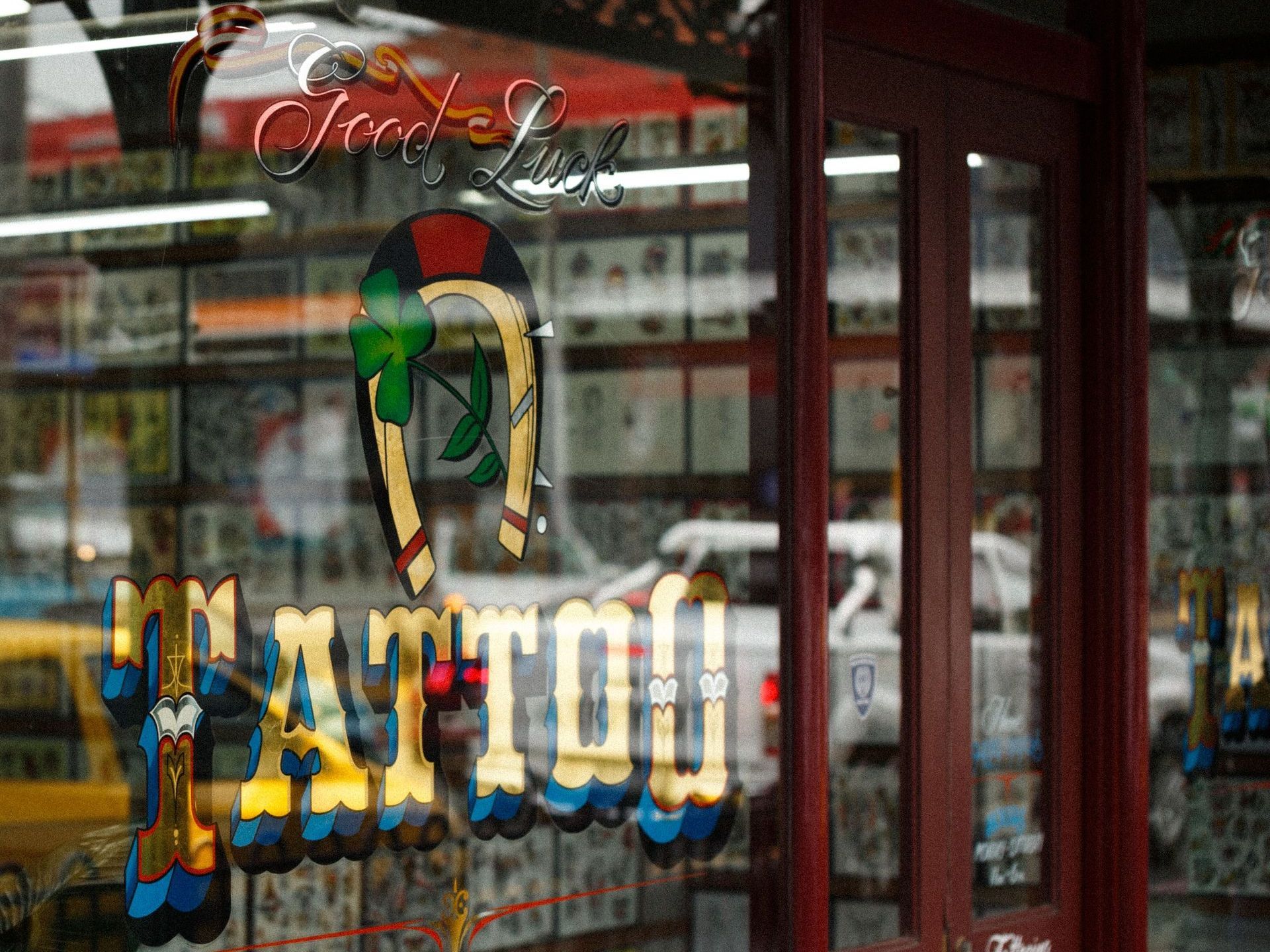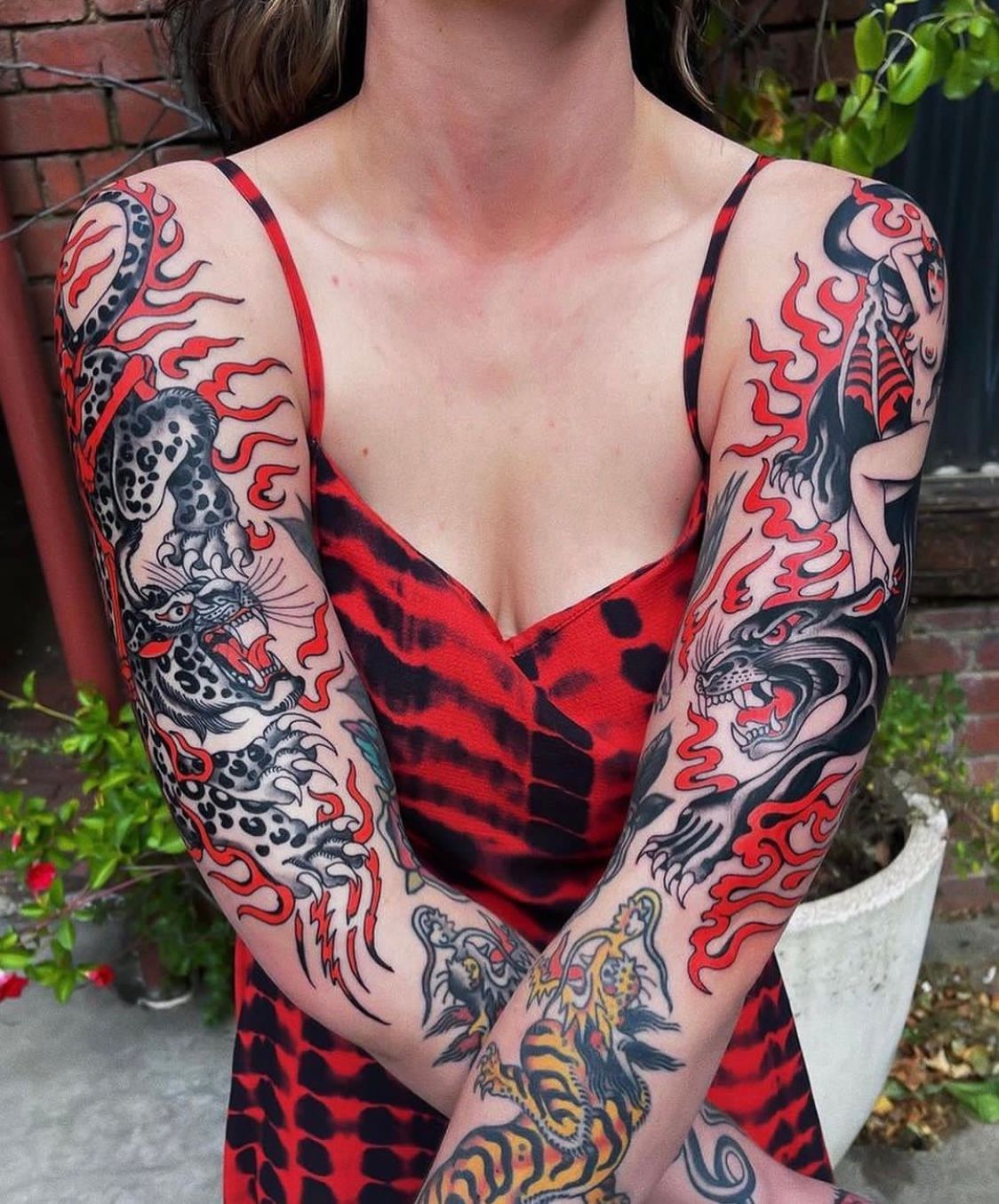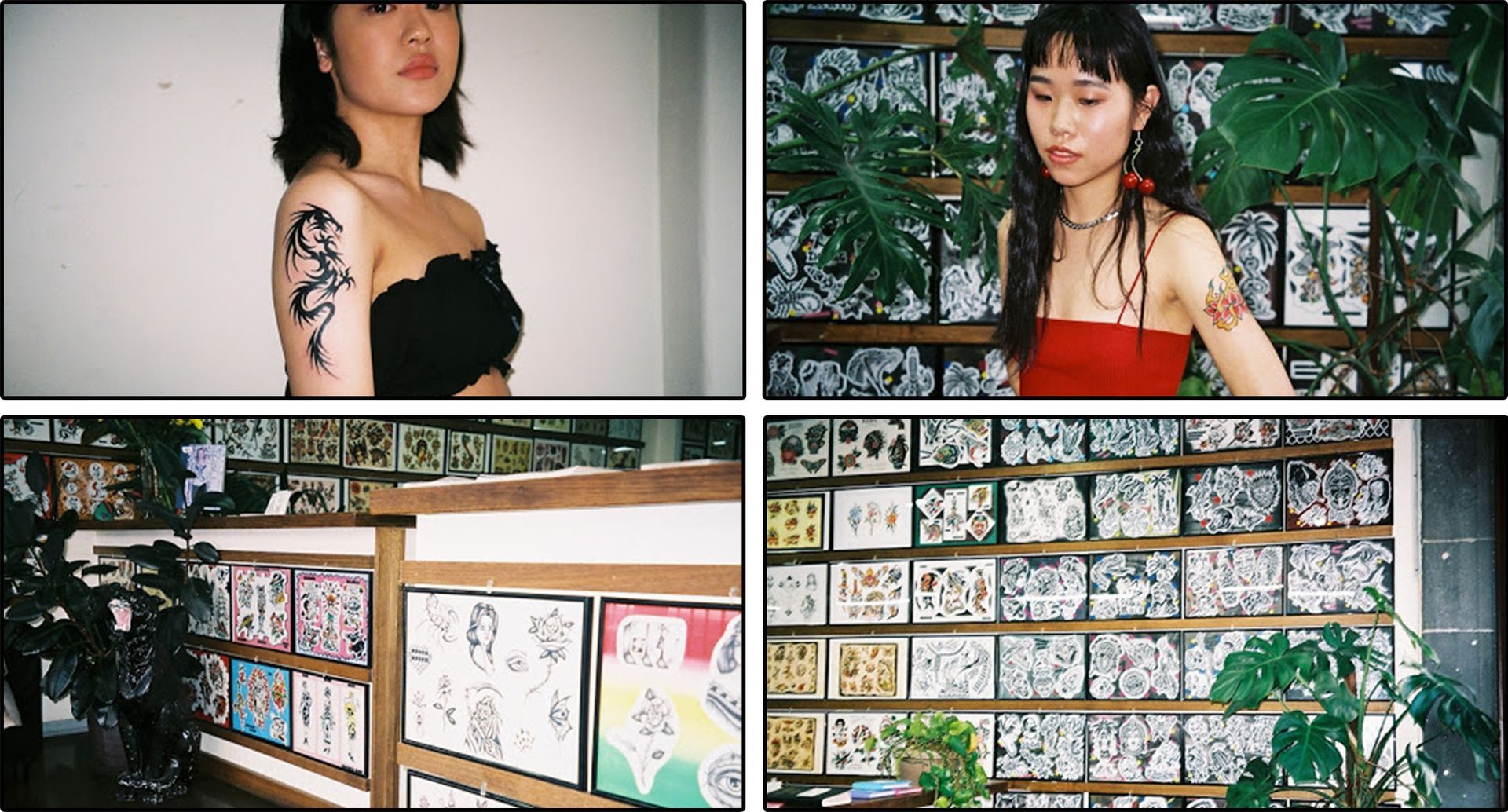Ever wondered how flower tattoos originated? The symbolism and meaning behind them? Read on to find out...
Tattoos, like flowers, have a language all their own, and when you intertwine them, you get a vibrant tapestry of symbolism and cultural history. At Good Luck Tattoo Parlour, we love the timeless aesthetic of flower tattoos, and understanding their historical roots adds depth to this vibrant style.
Floral Roots
The history of flower tattoos stretches back through the ages, with early evidence found in the ancient world.
The Ancient Egyptians had many traditional uses and applications of Blue Lotus flowers. The intricate floral patterns adorned the skin, creating a fusion of body and nature.
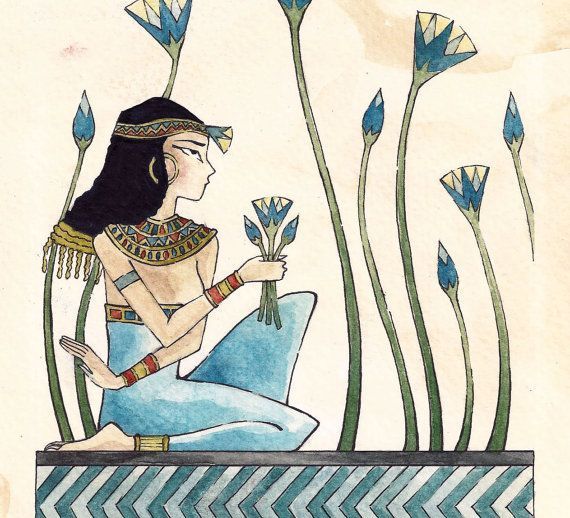
Blue Lotus flower was used extensively in medicine, magic, ritual, and celebration. Blue Lotus is said to induce a state of euphoria, promote relaxation, & improve circulation, making it a potent aphrodisiac. The Ancient Egyptians were sexual people, emphasising rituals and celebrations around sexuality.
Silk Road : Cultural Fusion
The Silk Road (130 B.C.E - 1453 C.E), a network of trade routes connecting East and West, played a crucial role in the spread of tattoo artistry. Along this historic path, floral motifs found their way onto the skin, symbolising prosperity, growth, and cultural exchange.
Merchants and traders from different corners of the world shared not only commodities but also their traditions. Alongside the silk fabrics and exotic spices, the Silk Road became a conduit for the exchange of artistic techniques, including the practice of tattooing.
Floral patterns, with their universal symbolism and aesthetic appeal, transcended language barriers. As artisans and tattooists plied their trade along the Silk Road, the motifs of lotus blossoms, cherry blossoms, and intricate botanical designs made their way onto the skin of those who dared to carry a piece of the exotic journey with them.

Map of the ancient Silk Road route
Victorian Era: The Secret Garden Of Ink
Fast forward to the Victorian era (1800's), where the language of flowers was blooming.
The Victorian era, characterised by its rigid societal norms and elaborate etiquettes, may seem worlds away from our modern world.
In an era where openly expressing emotions was considered improper, individuals turned to flowers to convey sentiments. Floriography assigned specific meanings to different flowers, allowing people to communicate covertly through the language of blossoms.
Each flower carried a specific meaning, allowing individuals to express sentiments without words. This intricate symbolism found its way into the realm of tattoos, turning the skin into a canvas of secret admirations and coded messages.

Victorian Era Tattoos
Victorian Flower Language Meaning
| Flower | Meaning |
|---|---|
| Rose | Love and passion |
| Lily | Renewal & purity |
| Violet | Modesty and faithfulness |
| Forget-Me-Not | Eternal love and remembrance |
The Revival: Flower Power in Modern Tattooing
In the 1900's, tattoo culture experienced a renaissance, and flower tattoos regained popularity with a contemporary twist.
The counterculture movement of the 1960s brought about a radical shift in societal attitudes. Flower power, a symbol of peace and love, manifested not only in protests and festivals but also in the form of floral tattoos. Hibiscus, daisies, and sunflowers adorned the skin, embodying the free-spirited ideals of the Woodstock era.
Iconic figures like Janis Joplin (pictured) a symbol of the counterculture movement, proudly displayed her flower tattoos. The vibrant petals etched on her skin became emblematic of a generation seeking love, peace, and freedom.
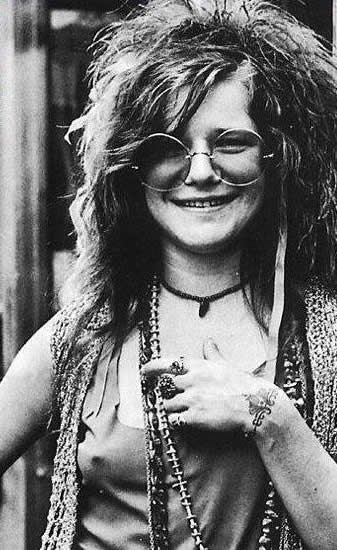
In the punk and rock scenes of the late 20th century, flower tattoos took on a rebellious edge. Black roses and wilted blooms became symbols of defiance, challenging traditional notions of beauty and embracing the darker side of floral imagery.
Cultural Significance: A Global Bouquet of Meanings
Flower tattoos transcend borders, each culture infusing its unique symbolism into petals.
From the cherry blossoms of Japan symbolising transience to the lotus in Hinduism representing spiritual enlightenment, floral tattoos becomes a bridge between diverse traditions.
Global Floral Symbolism
- Cherry Blossom (Japan): Transience and the fleeting nature of life.
- Hibiscus (Hawaii): Beauty, charm, and hospitality.
- Lotus (India): Spiritual enlightenment and purity.
- Mexican Marigold (Mexico): Day of the Dead celebrations and remembrance
Cherry blossoms hold profound cultural significance, especially in Japanese culture. They represent the transient nature of life, beauty, and renewal. The annual cherry blossom viewing, known as "hanami," is a celebration of these delicate blooms.
Crafting the Future: Flower Tattoos at Good Luck Tattoo
Today, at Good Luck Tattoo Parlour, we continue this rich legacy, infusing traditional charm with modern flair. Our skilled artists draw inspiration from history and cultures worldwide, creating unique floral masterpieces that stand the test of time.
In the intricate petals of a floral tattoos, we find not just ink but a living canvas, connecting us to the cultural roots and timeless expressions of beauty and the secret language of symbolism.
Ready for your next flower tattoo?
Visit us at
Good Luck Tattoo Parlour to embark on your own journey through the history and artistry of flower tattoos. Call us or simply
walk in to our
Richmond studio.
